French 1938 Delage Classic Car Wins Best of the Best Award
A classic French-made car won the highest honour in the prestigious Peninsula Classics Best of the Best Award.
In the history of cars, many brands don’t succeed in the long term. But classic cars produced in the early 19th century live on for their stylish elegance and engineering technology of the time. They are now sought by collectors worldwide and compete in classic car contests. The newest winner of the top prize for a classic car is a French brand. A 1938 Delage Type D8-120 S Cabriolet by De Villars recently won the Peninsula Classics Best of the Best Award.
The winner is chosen from an elite group of exceptional classic cars that have previously won significant awards at the Concours of Elegance events. The Delage won the Best of Show trophy at the 2022 Concours of Elegance at the Hampton Court Palace making it eligible to compete in this year’s Best of the Best award.
The Peninsula Classics Best of the Best Award is sponsored by The Peninsula Hotels and focuses on the preservation of heritage and immaculate restoration of classic cars from around the world. Contest judges this year included car designers and industry leaders such as Henry Ford III from Ford Motor Company; Ian Cameron, former Design Director for Rolls-Royce; and Anne Asensio, Vice President of Design Experience for Dassault Systèmes. Knowledgeable classic car enthusiasts were also part of the judging team including TV host and car collector Jay Leno, fashion designer Ralph Lauren and former Pink Floyd drummer Nick Mason.
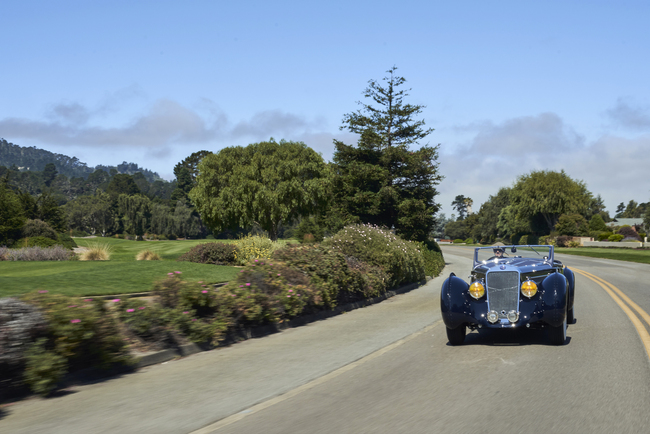
© Carbeautyshots
Style meets engineering innovation
The Delage brand was created in 1905 by Louis Delage and became a prestigious luxury French brand. The winning 1938 Delage came to the US in 1958 when the owner of Precision Motors in Beverly Hills, California, bought it. At the time, it had 100,000 kilometers on the odometer. Precision Motors was one of California’s first importers of foreign cars and was considered a “dealer to the stars.”
Elegant, luxurious style along with engine design technology drove the popularity of cars in the early days of automobile manufacturing. The French were a top leader with brands including Bugatti, Delahaye, Hispano-Suiza, Talbot-Lago and Delage. Although Henry Ford introduced the Model T and assembly-line production in 1908, it required building roads that could handle car traffic (instead of cows) for the industry to really take off. Europe was way ahead of the US in road improvements so the classic cars of France, the United-Kingdom, Italy and Germany became legend.
Classic cars reigned between 1925 and 1948 with the height of the era between 1925 and 1938. Automakers raced to outdo each other in style and engineering innovations that were attractive not only to the wealthy but also to the growing trend of car enthusiasts around the world. Delage was one of the leaders not only in car style but in superior engineering standards.
Automotive perfection
Louis Delage earned an engineering degree from the École des Arts et Métiers in Angers, France, in 1893. By 1903, he was the chief draftsman for Peugeot, which was a small but thriving automobile company, and two years later he obtained the financial backing to establish his own company, Delage & Cie.
Creating a popular car wasn’t easy. It took Delage three vehicle design attempts to create a two-cylinder engine that was practical for the motoring public before Delage cars became successful. By 1912, 350 workers produced over 1,000 cars annually at a factory in Courbevoie (outside of Paris) and offered four- and six-cylinder engines. Unlike most automakers of the time which assembled cars with previously manufactured parts, Delage designed and constructed its own frames, hardware and 50 percent of its own engines. Before World War I, Delage’s small, light and stylish cars sold at competitive prices and were more manageable, which appealed to women drivers.
Auto racing was the marketing tool of its time for all auto manufacturers. Winning cars were promoted for their speed and style which stimulated sales. Delage saw initial racing success with the Coupe des Voiturettes and entered Grand Prix racing in 1912. At that year’s French Grand Prix, Delage cars came in first, second and fifth place, beating Mercedes. Delage cars broke the speed record in 1914 reaching 143 miles per hour (mph) and won the Indianapolis 500 that year. Delage continued to race in and win many international races, including Le Mans.
After the war, Delage concentrated on large cars powered by 6-cylinder engines that topped 80mph. With the introduction of four-wheel brakes and a glamorous chassis, Delages were considered among the most luxurious of cars and became very popular.
But Delage chaffed under the competition from rivel French car manufacturer Hispano-Suiza which began a long series of financial issues. He demanded much from his team of engineers and fired those who questioned him which led to an up and down production of cars that did not meet the usual standards of a Delage.
Ultimately, Louis Delage prevailed with the introduction of the Type D8, which is considered Delage’s finest example of automotive construction. They came in long- or sport-length wheelbases, powered by a pushrod straight-eight engine with overhead valves producing top speed that exceeded 100 mph. That was quite the feat in 1929.
Then the worldwide Depression affected all the classic car manufacturers. No one bought cars, especially cars considered to be luxurious. By 1935 it was increasingly hard to meet expenses and Delage ultimately went into liquidation and transferred the company to French car manufacturer Delahaye.
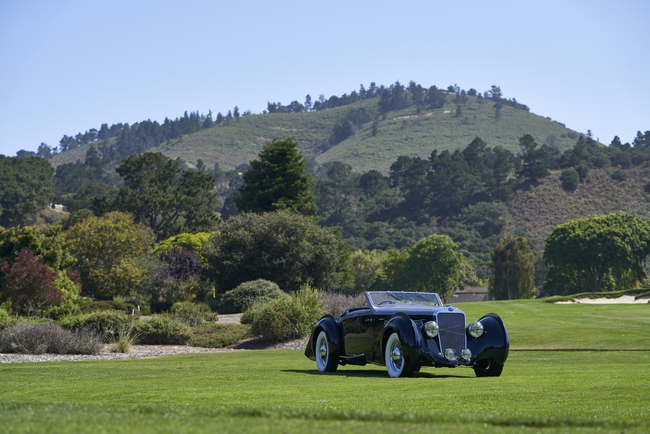
© Carbeautyshots
Delage’s legacy
The Delage D8 continued to be produced under Delahaye including this year’s winning 1938 D8-120 S Cabriolet by De Villars. The D8 refers to the 8-cylinder engine, the 120 indicates it was produced between 1937 and 1940 and the S refers to the sport wheelbase that is optimized for handling and maneuverability. The Delage brand disappeared completely when Delahaye was purchased by French automaker Hotchkiss in 1954. It was the end of an era for Delage and Delahaye classic cars. Louis Delage died in 1947.
Delage not only lives on in the classic car arena where it is a highly collectable, but the brand was recently resurrected. The association Les Amis de Delage, which has owned the Delage brand since 1956, re-founded the company as Delage Automobiles. Currently, a hybrid called Bonkers Delage D12 is available in a coupe or Formula 1 style model. A V12 engine of 990 horsepower (hp) is partnered with an electric motor of 110hp for a cumulative power of 1,100hp. Produced in France, both have a fighter jet style body and a price tag of $2 million. It won Best Design award in the Automobile Awards 2020/2021.
In addition, Delage unveiled a race car in this year’s Le Mans race. Painted in the original logo’s blue color, the car and racing team came 6th in the endurance race’s Le Mans Prototype 2 (LMP2) class for racing cars with no production minimum required.
Louis Delage would be pleased that in the current world of countless car styles, his brand is back and beating out much of the competition.
Delage cars can be viewed at the Mullin Automotive Museum in Oxnard, California.
Lead photo credit : The winning 1938 Delage © Carbeautyshots
Share to: Facebook Twitter LinkedIn Email
More in classic cars, France in America, french car, French history
Leave a reply
Your email address will not be published. Required fields are marked *

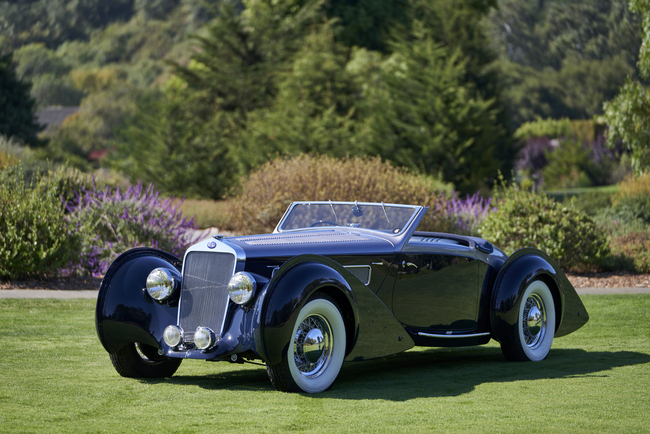

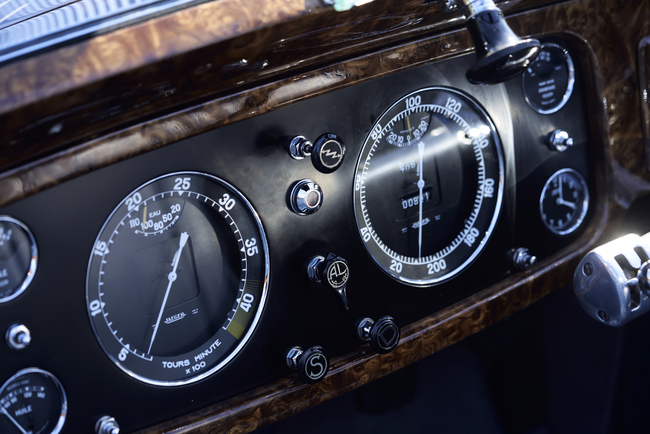
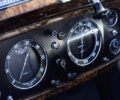
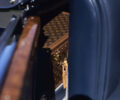
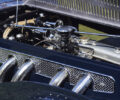
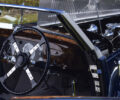
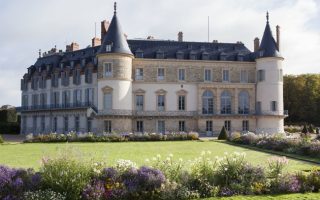


REPLY